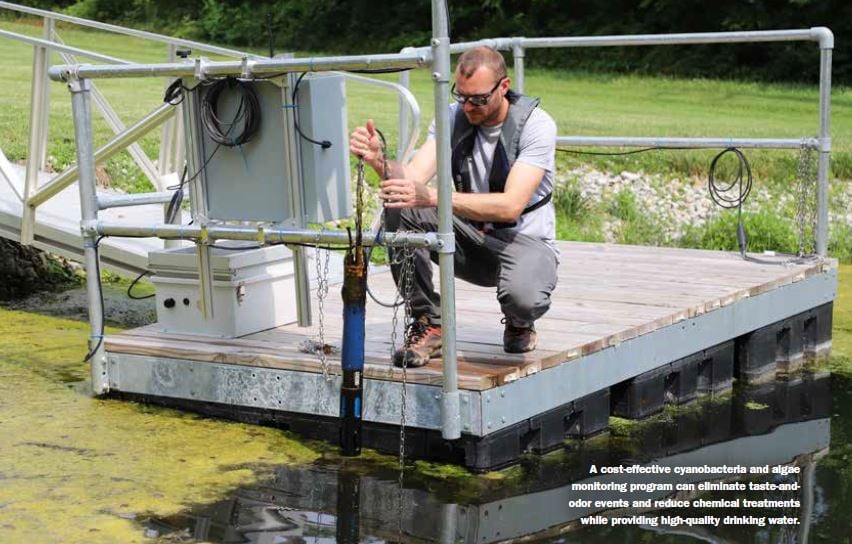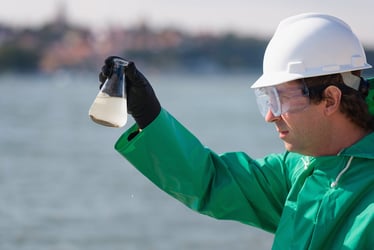The cost of monitoring equipment for proactive algae monitoring for water utilities can seem daunting and funding is not always attainable. But solutions are available.
"Stepping into this realm is daunting, but enterprising US water quality managers have made the leap. In doing so, they’ve earned public confidence and saved their utilities money while providing consistently high-quality drinking water.
Treatment technologies like ozone are highly effective at disinfection and degrading organics thereby eliminating most biological concerns that create taste and odor (T&O) issues. However, such technologies often come with a bond-worthy price tag that remains inaccessible to most utilities. Developing a savvy biological approach involves more scientific finesse but offers tremendous value by allowing utilities to monitor and improve water quality before raw water enters the treatment plant."
This is a quote from an article in the American Water Works Association's (AWWA) publication, Opflow, describing the challenges currently facing water utilities across the country. This and two other recent articles lay out strategies to proactively monitor for cyanobacteria and T&O-causing algae.
"T&O problems are not considered risks to human health, but they sometimes serve as indicators that cyanobacteria are present in sufficient quantities to create a toxin event as well. Drinking water aesthetic quality problems can occur in many cities, and consumers often mistakenly perceive T&O as a measure of drinking water safety. T&O events can be a costly nuisance to water systems. Analytical detection of T&O compounds can be difficult because of their varying chemistry, the different required sampling techniques and source water management, and the subjectivity of methods".
To learn how utilities around the country are addressing this critical challenge, read these articles from Opflow:
Eliminate Taste-and-Odor Events With Cost-Effective Algae Control
This article provides the cost breakdown of the equipment and training employed by Beaufort-Jasper Water & Sewer Authority (BJWSA) in Okatie, South Carolina. BJWSA was able to save tens of millions of dollars by using a three-pronged approach rather than implementing ozone treatments. Their start up costs were $400,000. These included: a FlowCam Cyano semi-automated flow-imaging microscope, a gas chromatograph–mass spectrometer (GC-MS), reservoir sondes from In-Situ (www.in-situ.com), handheld probes from YSI Xylem (www.ysi.com), and training for existing staff.
Tackle Taste and Odor with Proactive Water Quality Monitoring
This article covers three relatively new technologies - multiparameter sondes, semiautomated flow-imaging microscopes, and DNA-based assays—and how they can be integrated from the field to the lab to form the foundation of a comprehensive screening program for cyanobacteria and address concerns about the production of T&O compounds as well as toxins.
Successfully Detecting and Mitigating Algal Blooms and Taste and Odor Compounds
The final article tells the story of how one drinking water utility in Wichita Falls, Texas developed a multi-layered system to proactively identify cyanobacteria problems in their water supply before they grow to noticeable or harmful levels - saving themselves a lot of time and expense.
Crucial to Wichita Fall's system is FlowCam. This "semiautomated, flow-imaging microscope can provide rapid imaging, identification, and enumeration of cyanobacteria and nuisance algae... Samples can be processed in less than 10 minutes, with cyanobacteria, diatoms, and algae automatically sorted on the basis of pigment excitation. Digital images are saved along with a comma-separated-values report of the count, concentration, and size of the organisms, enabling technicians to quickly spot known problem organisms... The result of implementation is actionable data backed by a repeatable, scalable, and user-friendly method, which helps utilities facing staff turnover or with limited microscopy and taxonomy skill sets."











